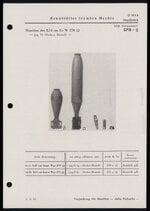Seems US Powders often not as flashless or smokeless as the German, so already at a deficitThey screw up your camouflage and make you easier to spot and they make it hard to see where your shells are landing.
Matilda have had a turret with a 6pdr mounted for trials (the trials maybe never happened?);
Or bigger
Which means theoretically could have had the KV II turret



